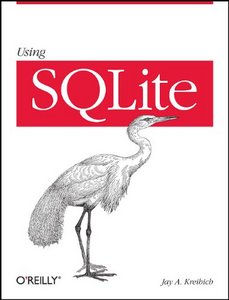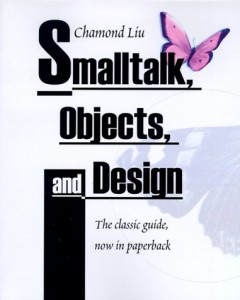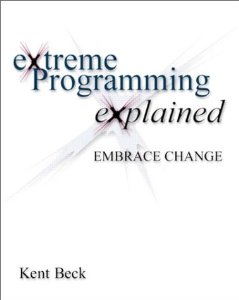Introduction
I’ve read this book in 2012 and wrote the notes around this time. I won’t add anything. It’s just for the sake of completion.
-
“Positive psychology is the scientific study of optimal human functioning and what makes life worth living”
-
Founders
-
Martin Seligman
-
Mihaly Csiskszentmihalyi
-
-
Journals
-
Journal of Positive Psychology
-
Psychology of Well-being
-
Journal of Happiness Studies
-
International Journal of Well-being
-
-
40% of our happiness is determined by intentional activities
-
Well-being journal
-
Record activities and how you get on with them
-
Start off with an initial level
-
Positive psychology center: four question general happiness scale, five question satisfaction with life scale and 24-question authentic happiness inventory
-
-
-
Happiness is less about ‘having’ and more about ‘doing’
-
Changing how you spend your time and your outlook on life helps achieving long-lasting happiness
What is happiness?
-
Hedonic well-being: feeling pleasure
-
Eudaimonic well-being: doing what is worth doing; meaning and purpose in your life, fulfilling our potential and feeling that we are part of something bigger than you
-
Subjective Well-Being (SWB) = Satisfaction with Life + Positive Emotion – Negative Emotion
-
Satisfaction with life: what I think about my life
-
Positive Emotion: how positive I feel
-
Negative Emotion: how negative I feel
-
-
PERMA (M. Seligman)
-
Positive emotion
-
Engagement (flow)
-
Relationships
-
Meaning
-
Accomplishment
-
Barriers to well-being
-
Barrier: negativity bias
-
You are more likely to remember bad things (experiences, emotions & information) than good ones
-
Positivity ratio if 3:1 (Losada line), means you will need three times the positive experiences to flourish
-
“bad is stronger than good”
-
> try to make a conscious effort to notice and focus on the good things in your life first
-
-
Barrier: duration neglect
-
Duration hardly matters at all
-
More important factors
-
Intensity of the peak emotion
-
The end of the experience
-
-
> try to end experiences on a high note
-
Most pleasant task / experience last
-
Remember how much you’ve done so far
-
Try to reframe bad experiences in a positive way
-
-
-
Barrier: social comparison
-
> try to compare yourself with those who are worse off
-
-
Barrier: hedonic treadmill
-
Positive experience fade away rather quickly
-
Bad experiences fade away more quickly
-
-
Barrier: lack of self-control
-
“lack of self-regulation is at the hart of many of the social and personal problems that we suffer in the modern, developed world”
-
Higher self-control is actually linked to higher well-being
-
The more you practice self-control, the stronger it gets
-
> find an activity that requires self-control but which you are motivated to do
-
Positive emotions
-
Broaden and build theory (B. Fredrickson)
-
Experience of positive emotions enables people to create additional resources in the following categories:
-
Intellectual (e.g. problem-solving skills)
-
Physical
-
Social
-
Psychological
-
-
> try to find positive experiences: plan something different for a week, look at pictures that make you happy
-
-
Small acts of kindness helps building relationships and makes you happy
-
Amusing experiences help you to recover more quickly from negative experiences / stress
-
Benefits of happiness and positive emotions
-
Longer lifespan
-
Higher earnings
-
Sociability and better quality relationships
-
Better mental and physical health
-
Likeability
-
Greater persistence
-
Creativity
-
More efficient decision-making
-
=> cause or effect?
-
-
Frequency of positive emotions is more important than intensity
Engagement or flow
-
‘high-skill high-challenge’ experiences (in the zone)
-
Characteristics of activities
-
Right challenge level (not too hard and not too easy)
-
You goal is clear
-
Immediate feedback
-
Feel completely absorbed and at one with what you’re doing
-
You feel in control
-
You lose track of time
-
You don’t feel self-conscious
-
The activity is intrinsically rewarding
-
-
Flow is linked to
-
Achievement
-
Better physical health
-
Improved self-esteem
-
-
High challenge + medium – high skill = flow
-
High challenge + low skill = anxiety and stress
-
Low challenge + medium – high skill = apathy and boredom
-
You can make the challenges more difficult by setting goals
-
E.g. washing the dishes in 20 instead of 30 minutes
-
-
-
Get more flow into your life
-
SMART goals
-
Specific
-
Measureable
-
Achievable
-
Realistic
-
Time-bound
-
-
Aim for high-skill & high-challenge balance
-
Focus on what you’re doing
-
Find ways to get immediate feedback
-
Make the task more fun
-
Positive relationships
-
Moods and behaviors are contagious
-
Happiness depends on the people with whom you are connected
-
-
Warm, trusting and supportive relationships are important for well-being
-
Ability to respond enthusiastically to good news is more important than how we communicate in bad times
-
Passive Constructive (PC) – “it’s good / nice”
-
Passive Destructive (PD) – turn conversation to yourself
-
Active Destructive (AD) – respond with negative notions “that’s terrible because X”
-
Active Constructive (AC) – enthusiastic & energetic support allowing them to capitalize on the good news
-
-
Relationship positivity ratio 5:1
Meaning and purpose
-
Two central functions
-
Bedrock foundation which allows us to be more resilient
-
Sense of direction which allows us to set goals and targets to aim for
-
-
PURE (P. Wong)
-
Purpose (motivations, goals, values and aspirations)
-
Understanding (self-awareness, who you are, what you do and where you stand)
-
Responsibility (integrity, assuming responsibility)
-
Enjoyment / Evaluation (enjoyment of life, iterations)
-
-
Meaning
-
Classical by internal & external meaning
-
Or by relationship:
-
Work as a job – to finance your mean time (extrinsic)
-
Work as a career – focused on promotions / rewards (extrinsic)
-
Work as a calling – end in itself, contribution & personal fulfillment
-
-
Accomplishment
-
Accomplishment
-
Achievement, success, competence, mastery and progress towards your goals
-
-
Achievement is influenced by skill and effort
-
Speed of thought
-
Rate of learning
-
-
Competence
-
Get regular feedback
-
Improve your skills
-
Get a mentor
-
Appreciative inquiry (AI)
-
Meanings
-
To be grateful
-
To recognize the value / quality of something
-
To increase in value
-
-
A process for implementing & achieving change: strength-based approach to managing change
-
Start with what’s working well and then build on this information
-
Principles
-
‘Words create worlds’ – subjective perception allows people to see the same situation in different lights
-
Asking question starts the change process
-
Individual experience can be told and reinterpreted in different ways
-
Positive change can come from positive images of the future
-
Review of what works well is more enlightening
-
-
AI works on a systemic level
-
Stages of AI
-
Start: ‘Positive core’ – What is good / great?
-
Stage 1: Discovery: asking further positively-framed question about your positive core
-
Stage 2: Dream: Create positive & compelling vision of the future
-
Based on descriptions & stores from Stage 1
-
-
Stage 3: Design: Create a design for the future
-
Stage 4: Destiny: Developing, creating and improving
-
Character strengths
-
Assessment
-
Values in Action Inventory of Strengths
-
Strengthscope
-
Realise2
-
-
Talent = Foundation for strength development
-
Competence = something you are good at but don’t partially like
-
Strengths = personal attributes which energies us, which feel like us and which enable optimal performance
Emotional intelligence
-
Emotional intelligence have greater awareness of their own emotions & of others
-
Self-aware
-
Self-managed
-
Socially-aware
-
Socially-Skilled
-
-
Model of emotional intelligence based on these skills:
-
Identifying emotions
-
Using emotions appropriately
-
Understanding the causes of emotions
-
Managing your emotions
-
-
Negative feelings
-
Make us more focused
-
Easier to be critical
-
More likely to spot mistakes
-
Easier for us to pay attention to detail
-
-
Positive feelings
-
Expand our thinking
-
Easier to think up new ideas
-
Encourage us to consider new possibilities
-
Think in terms of opportunities
-
Gratitude
-
Gratitude relates strongly to your sense of coherence
-
Belief that life is manageable, meaningful and understandable
-
-
How to
-
Write a gratitude journal
-
Iamthinkful.com or thankfulfor.com
-
-
Write a thank you card / letter
-
What where your three good things today?
-
What went well?
-
Mindfulness
-
Specific type of meditation-based practice
-
Paying attention in the following way
-
On purpose
-
In the present moment
-
Notice thoughts and emotions as they occur
-
-
Non-judgmentally
-
Accept things as they are
-
-
-
Opposite of mindlessness
Mindsets
-
Fixed mindset
-
Your personal qualities and abilities are carved in stone
-
-
Growth mindset
-
Personal qualities and abilities can be changed or developed
-
-
Effects of a growth mindset
-
Focus on learning goals:
-
First gaining competence then mastering it
-
Less about winning and losing and more about growing and learning
-
-
Responding to failure / Taking responsibility
-
Making an effort
-
‘Practice makes perfect’
-
-
Problems as opportunities to try new strategies
-
Motivation and goals
-
Approach goals: positive outcomes
-
Contribution to our well-being
-
Presence of something positive
-
-
Avoidance goals: negative outcome
-
Stressful
-
Absence of something negative
-
-
Self-Determination Theory (SDT) for human motivation
-
Control / Autonomy for setting goals
-
Competence – Regular positive feedback
-
Connection – Relationships with people who are close and secure
-
-
Improving your working memory will help increase your self-control
-
Brainworkshop.sourceforge.net
-
-
Goal focus by commitment
-
Fully committed -> focus on what you have left to accomplish
-
Uncertain commitment -> focus on what you have done so far
-
Nutrition
-
Deficiency of
-
Omega-3 can lead to depression, anxiety, poor concentration and mood swings
-
Folic acid is linked to fatigues, confusion and irritability
-
Iron is linked to fatigue, irritability, apathy, inability to concentrate and increase depressive symptoms
-
Vitamin B12 is linked to loss of memory, mental dysfunction and depression
-
Vitamin C has been shown to reduce major depression
-
Zinc is linked to depressions
Optimism
-
Advantages
-
Less anxiety, depression and distress
-
More effective coping
-
Higher life satisfaction & increased well-being
-
Stronger immune system and lower cardiac risk
-
Recover from surgery more quickly
-
Adapt better to negative events
-
Don’t give up so easily
-
More action-oriented when faced with problems
-
-
Styles
-
Explanatory styles
-
The way we explain our experiences
-
Optimists attribute the cause of negative events to
-
External
-
Specific
-
Transient factors
-
-
Optimists attribute the cause of positive events to
-
Internal
-
Global
-
Permanent factors
-
-
-
-
Defensive pessimists
-
Take their expectation as shield to manage their anxiety
-
Don’t profit from optimism
-
Physical exercise
-
Tips
-
Find different forms of exercise that you enjoy and alternate them
-
Consider mixing individual, partner & team exercises
-
Be part of group – helps if your self-control isn’t strong
-
Think outside the box
-
Start with the most pleasant exercise first, then it’s easier to continue
-
Start with small steps
-
-
Benefits
-
Reducing high blood pressure
-
Developing strong bones & muscles
-
More active brain cells
-
Better mental skills
-
Better memory
-
Enhance body image, self-esteem & self-perceptions
-
Improved sleep patterns
-
Reduce emotional distress
-
Reduced depression
-
Reduced stress
-
-
Small commitments help a lot
-
5 – 30min walk
-
5min light resistance training
-
Resilience
-
Key element in positive psychology
-
Benefits
-
More likely to perceive challenges / setbacks as manageable
-
Greater emotional stability
-
Greater ability to cope with stressors & daily hassles
-
Greater energy
-
Curious & open to new experiences
-
Good at helping other people feel good too
-
-
Reflect on setbacks which you recovered from
-
You have a wide array of experiences dealing with setbacks
-
Write about your really bad life experiences
-
-
Three Ds
-
Distraction — do something to calm or silence your negative inner voice
-
Distancing — Your interpretation, is just an interpretation – you don’t have to see something the way you do
-
Will this experience matter in 5 hours / days / weeks / years time?
-
Who is wore off than me at the moment?
-
What else do I have in my life that is unaffected by this?
-
How can I interpret this situation more positively?
-
-
Disputation — look for evidence for and against your belief
-
-
Try to find benefits of (negative) events (benefit-finding)
-
Which doors have opened thanks to the event?
-
Savouring
“The aim of life appreciation.” — G.K. Chesterton
-
Savouring more down-to-earth definition of appreciation
-
To be thankful for something
-
To acknowledge the quality of something
-
To increase in value
-
=> Really noticing, appreciating and enhancing the positive experiences in your life
-
-
How to
-
Slow down
-
Pay attention to what you are doing
-
Use all your senses
-
Stretch out your experience
-
Reflect on your enjoyment
-
-
Savour things
-
In the present
-
From the past
-
In the future
-
-
Expressing your positive feelings externally can intensify them
Positive psychology of time
-
Stop trying too many things
-
Enjoy your free time more intensively
-
Don’t slump in front of the TV
-
Time perspectives
-
Future time
-
Able to delay gratification
-
Work towards future rewards
-
More successful
-
-
Present positive time
-
Enjoy life to the max
-
Less likely to be concerned about the consequences
-
-
Present negative time
-
Sense of hopelessness
-
Life is controlled by outside forces
-
-
Past positive time
-
Lots of pleasure from looking back
-
Like to maintain family traditions
-
-
Past negative time
-
More likely to have many regrets
-
-
-
Balanced time perspective (BTP)
-
Benefits:
-
Happier
-
More satisfied with life
-
Experience more positive emotions
-
Have stronger sense of life purpose
-
More optimistic
-
More self-efficacious
-
-
How to
-
Pick the right TP
-
E.g. studying: future TP, relaxing: present positive time
-
-
Where next?
-
Feeling outside of your comfort zone can be good — sign that you are learning something new
“What one thing will you commit to do today that will help improve your well-being for the longer term?”



